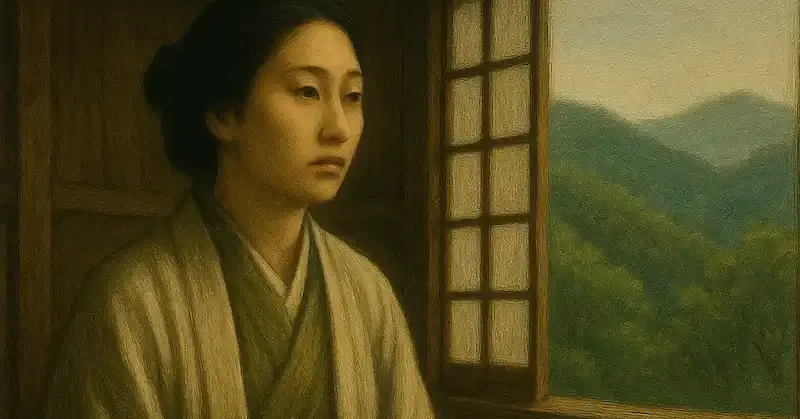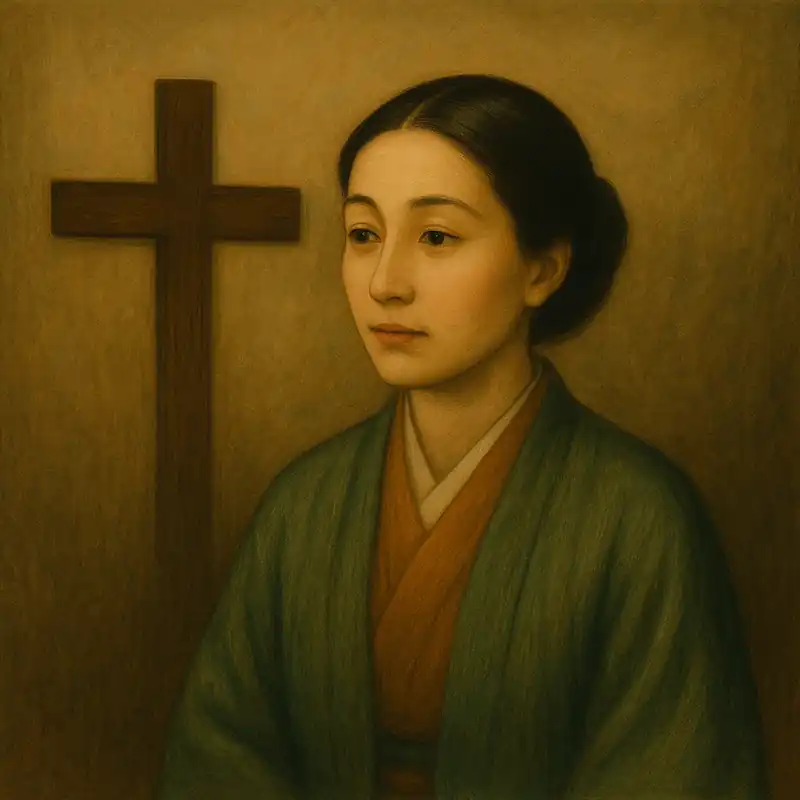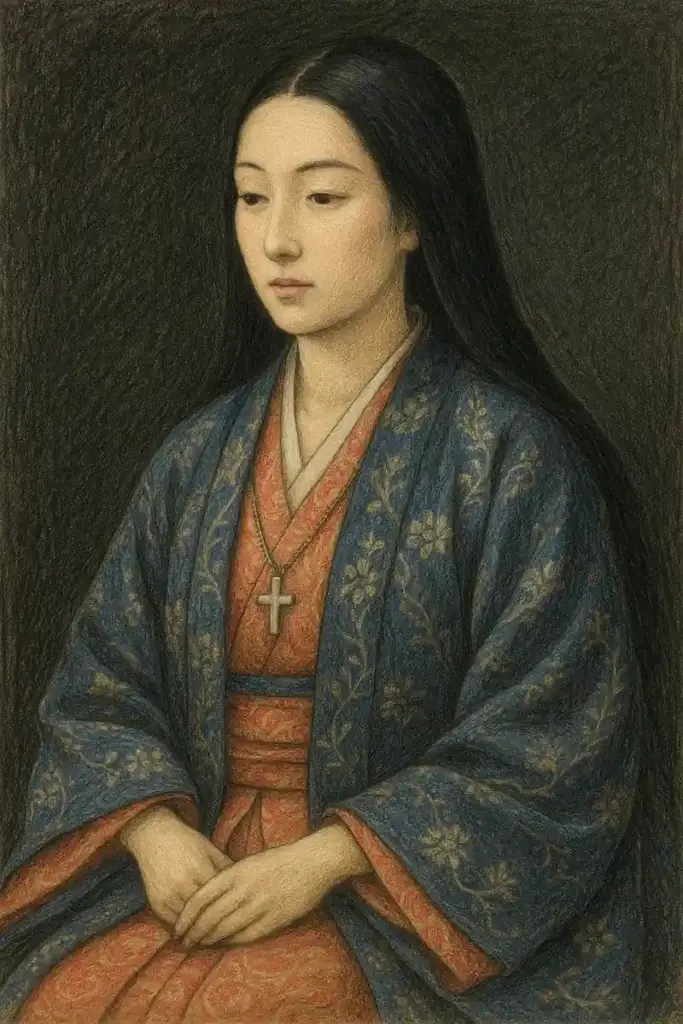
Gracia Hosokawa: A Life of Quiet Defiance
In the turbulent decades that marked the end of Japan’s Sengoku period, few figures stood as still and luminous as Gracia Hosokawa. Born as Tama Akechi in 1563, she never commanded armies or drafted political strategy. Yet her decisions—made in isolation, under surveillance, and ultimately under threat of war—carved out one of the most compelling moral narratives of the era.
Her story is not about the pursuit of power, but the pursuit of an interior truth: the right to live, believe, and die on one’s own terms in a time that rarely allowed women such choices.
A Childhood in the Akechi Household

Tama Akechi entered the world in 1563 as the daughter of Akechi Mitsuhide, a rising retainer of Oda Nobunaga. Raised in the strict and refined environment of a warrior household, she learned the etiquette, literacy, and composure expected of highborn daughters. But her childhood was shaped just as much by instability as privilege.
Japan in the late sixteenth century was a land where alliances shifted faster than seasons, and where a single betrayal could redraw the map overnight. Even as a girl, Tama would have sensed how fragile security could be.
A Political Marriage to Tadaoki Hosokawa
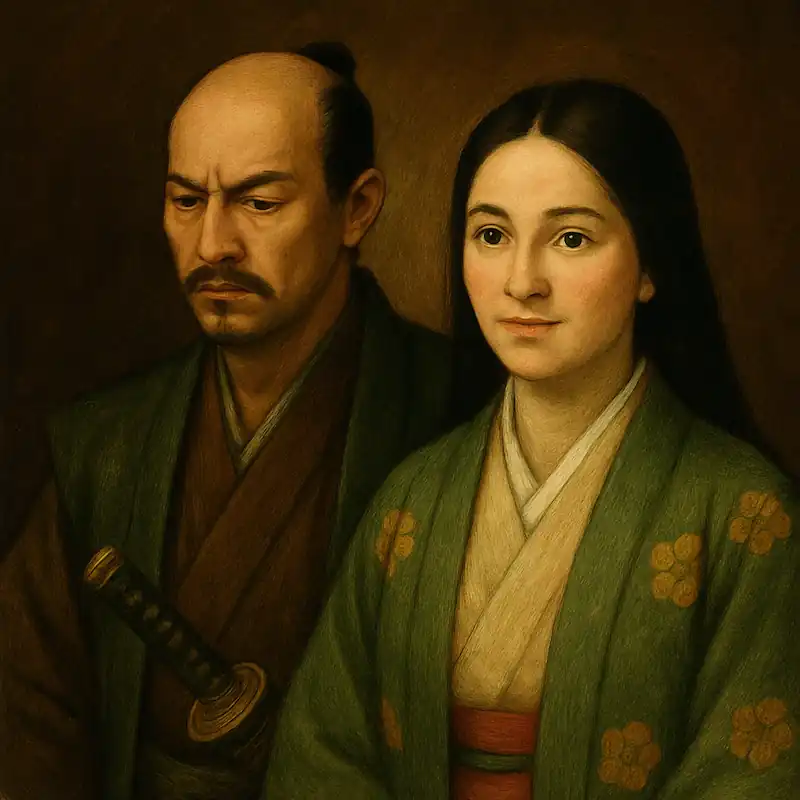
Around the age of sixteen, Tama married Tadaoki Hosokawa, a skilled and ambitious young warlord serving under Nobunaga. The union was purely political—a bridge between two powerful families—and Tadaoki’s temperament did little to soften its edges.
Though capable and loyal as a retainer, he was known for his severity, and historical records suggest little warmth between the couple. Still, Tama carried out her duties as a warrior’s wife with dignity, raising several children and managing the household expected of her station.
For a brief moment, her path seemed set: a life defined by marriage, motherhood, and service to the Hosokawa clan.
That future shattered in one violent week.
The Incident That Upended a Nation — and Her Life
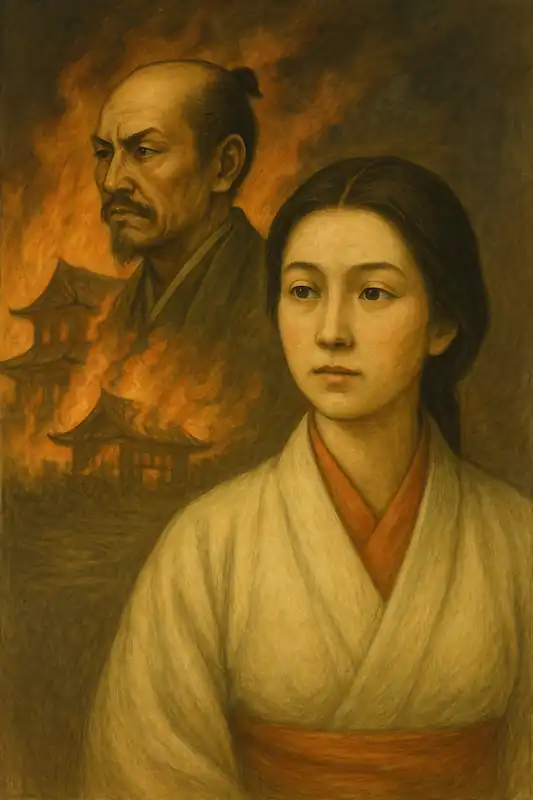
On June 21, 1582, Tama’s father ignited an event that still reverberates through Japanese history. Akechi Mitsuhide launched a surprise attack on his lord, Oda Nobunaga, at Honnō-ji temple in Kyoto. Nobunaga perished in the flames, and Mitsuhide himself was killed days later by forces loyal to Toyotomi Hideyoshi.
For Tama, the consequences were immediate and devastating. Overnight, she became “the traitor’s daughter.”
Tadaoki, desperate to distance the Hosokawa clan from Mitsuhide’s betrayal, confined Tama to a residence under strict surveillance. She was neither divorced nor fully protected—merely contained, silenced, and politically neutralized.
Her world contracted to the walls of a single compound.
Yet within that confinement, something unexpected began to grow.
Conversion and Rebirth — From Tama to Gracia

Cut off from public life and isolated from her children, Tama found herself drawn to ideas that offered a different kind of freedom. Through discreet encounters with Jesuit missionaries operating in Kyoto and Osaka, she learned about Christianity—a religion increasingly viewed with suspicion by Japan’s rulers but still tolerated in scattered domains.
Its teachings of grace, forgiveness, and inner renewal resonated deeply with her.
At a moment when her identity had been defined by shame, the faith offered a way to reframe her life not as a political liability, but as a soul with inherent worth.
Around 1587, Tama was baptized under the Christian name “Gracia,” meaning “grace.”
It marked a decisive shift: a life no longer governed solely by family, lineage, or obligation, but by conscience.
Tadaoki, wary yet pragmatic, allowed her to keep her faith under strict conditions. Still, as anti-Christian policies intensified across Japan, Gracia’s beliefs placed her—and potentially the Hosokawa household—under increasing scrutiny.
Life in Confinement — A Quiet but Unyielding Independence
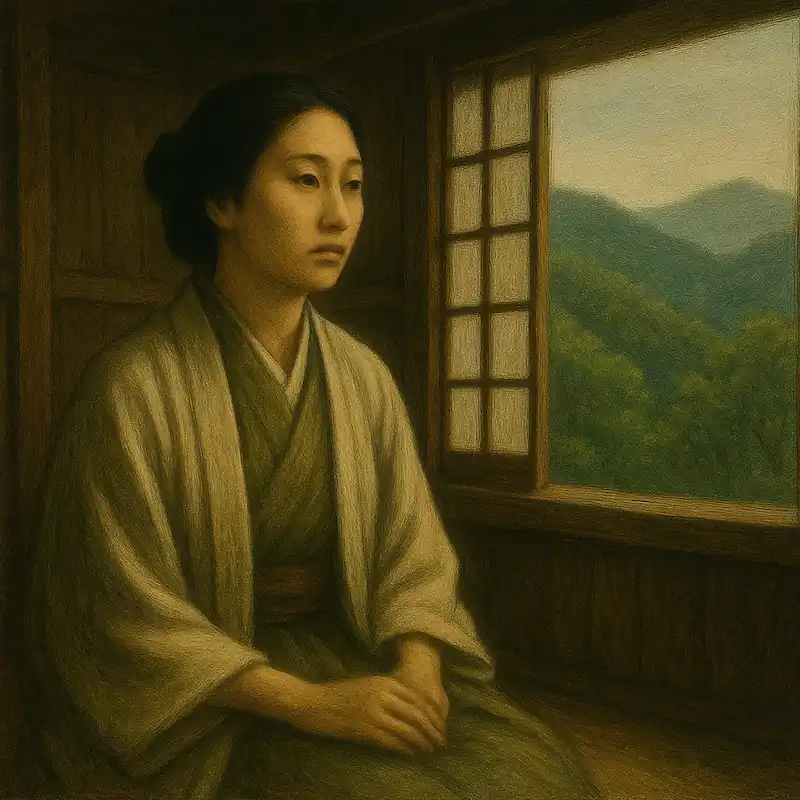
Despite restrictions, Gracia cultivated a rich inner world. Her residence became a place of quiet study, reflection, and private devotion. She exchanged letters with Jesuits and Japanese Christians, hosted clandestine conversations when possible, and won admiration for her intellect, poise, and hospitality.
Foreign missionaries described her as perceptive, articulate, and uncommonly composed.
For many noblewomen curious about Christianity, she became a symbol of spiritual integrity—a reminder that dignity could survive even when political agency had been stripped away.
This was resistance of a different kind: not rebellion, but the refusal to let adversity define her inner life.
The Road to Sekigahara and a Fatal Decision

The fragile balance of power collapsed again in 1598 with the death of Toyotomi Hideyoshi. By 1600, Japan stood on the brink of the decisive Battle of Sekigahara, with warlords dividing into Eastern and Western camps.
Ishida Mitsunari, leader of the Western coalition, sought to secure loyalties by taking the families of rival daimyō as hostages.
As Tadaoki aligned himself with Tokugawa Ieyasu, Gracia became a prime target.
Left in the Hosokawa residence in Osaka, she faced an agonizing choice when Mitsunari’s forces approached: be taken hostage—a violation of her dignity and a tool against her husband—or die on her own terms.
But as a Christian, suicide was forbidden.
So Gracia sought a third path.
She ordered a loyal retainer, Ogasawara Shōsai, to end her life in a way that avoided the sin of self-destruction. Shortly after, the residence was set ablaze to prevent her body from being desecrated. She was thirty-seven.
Her death shocked contemporaries across cultural and political lines. To Japanese observers, it embodied honor and resolve. To Christians, it resembled martyrdom. To both, it became a defining image of principle in a time of chaos.
The Legacy of Gracia Hosokawa
Gracia’s life was short, but its imprint proved enduring.
Among early Japanese Christians
She quickly became a revered figure—an example of unwavering conviction and moral clarity amid persecution.
In literature and cultural memory
Her story inspired plays, novels, and historical studies, not because she wielded political influence, but because she demonstrated how a woman in a constrained society could assert her inner sovereignty.
In modern Japan
Statues, churches, and schools bearing her name reflect her ongoing resonance. She remains a rare figure whose legacy bridges Japanese ethical traditions and Western spiritual thought.
Gracia left behind no military victories, no political reforms, no grand monuments.
What she left instead was a model of quiet strength—proof that in an age ruled by ambition and violence, conscience could still draw an unbreakable line.
From History to Screen: Meet Toda Mariko
Return to the Hosokawa Gracia Page
Click below to explore places associated with Hosokawa Gracia.
